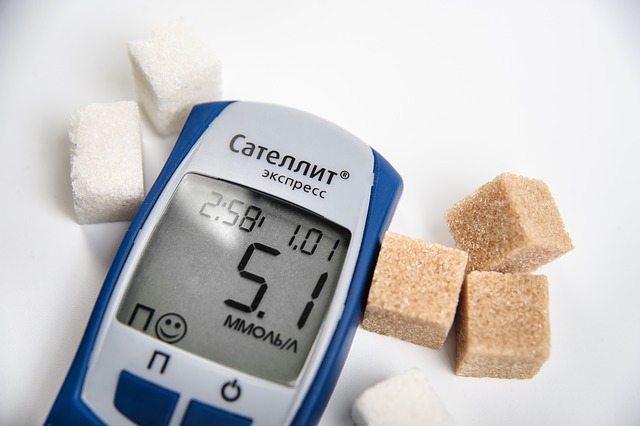Diabetes is one of the most prevalent and challenging health conditions worldwide, affecting over 400 million people globally. It’s a chronic disease that disrupts how the body converts food into energy, primarily due to issues with insulin—a crucial hormone for controlling blood sugar levels. Although there is no permanent cure yet, there has been significant progress in managing diabetes, understanding its causes, and exploring potential cures. This article dives deep into what diabetes is, its primary causes, and the promising research and therapies aimed at finding a cure.
Understanding Diabetes: Types and Mechanisms
Diabetes is classified mainly into two types: Type 1 and Type 2. Both types impact insulin production or the body’s response to insulin, but they have different causes and patterns.
- Type 1 Diabetes (T1D): An autoimmune disease where the body’s immune system mistakenly attacks and destroys insulin-producing cells (beta cells) in the pancreas. As a result, individuals with Type 1 blood sugar disease are insulin-dependent and need regular injections to manage blood sugar levels. This type often develops in childhood or adolescence and accounts for around 5-10% of blood sugar disease cases.
- Type 2 Diabetes (T2D): The more common form, Type 2 Blood Sugar Disease, develops when the body becomes resistant to insulin or the pancreas cannot produce enough insulin. Lifestyle factors such as poor diet, obesity, and lack of exercise are major contributors to Type 2 blood sugar disease. Unlike Type 1, Type 2 blood sugar disease can often be managed with lifestyle changes, although medication and insulin therapy may be needed in advanced stages.
- Gestational diabetes: a temporary form that can develop during pregnancy, often going away after birth but increasing the risk of developing Type 2 blood sugar disease later in life.
Both Type 1 and Type 2 blood sugar diseases result in high blood sugar levels, which over time can lead to serious health complications, including heart disease, kidney damage, nerve damage, and eye problems.
Causes of Diabetes: Genetic and Environmental Factors
The root causes of blood sugar disease are complex, involving a mix of genetic, environmental, and lifestyle factors. Here’s a closer look at each type and the factors that may lead to its onset:
1. Genetic Susceptibility
- Type 1 Diabetes: Genetic predisposition plays a major role in Type 1 blood sugar disease. Certain gene variants, especially those involved in immune regulation, increase the likelihood of developing this autoimmune disease. However, only a small percentage of those with these genetic markers actually develop Type 1 diabetes, suggesting that environmental triggers are also necessary.
- Type 2 Diabetes: Genetics also plays a part in Type 2 blood sugar disease, with family history being a strong risk factor. Certain gene mutations can impact how insulin is processed or how the body uses glucose, raising the likelihood of Type 2 blood sugar disease.
2. Lifestyle and Environmental Factors
- Diet and Exercise: For Type 2 diabetes, poor dietary habits, obesity, and sedentary lifestyles significantly increase the risk. Diets high in processed foods, sugars, and unhealthy fats contribute to weight gain and insulin resistance.
- Autoimmune Triggers: For Type 1 diabetes, environmental triggers, such as viral infections, may activate the immune system to attack pancreatic cells, though the exact mechanism is still being researched.
- Hormonal Changes: Hormonal shifts in women, particularly during pregnancy, can result in gestational blood sugar disease. After pregnancy, hormone levels stabilize, but women with gestational diabetes remain at increased risk of Type 2 blood sugar disease later in life.
Ongoing Research in Diabetes Causes and Potential Cures

Scientists have made remarkable strides in understanding diabetes and are hopeful about future treatments. Research in diabetes is aimed at addressing both the causes of diabetes and discovering treatments that could lead to a cure. Here’s an overview of some of the most promising areas:
1. Pancreatic Islet Cell Transplants
- In recent years, islet cell transplantation has been a promising treatment option, especially for Type 1 diabetes. Islets are clusters of cells in the pancreas that produce insulin. By transplanting healthy islet cells into a diabetic patient, scientists aim to restore the body’s ability to produce insulin naturally. While successful in some cases, challenges remain, such as immune rejection and the need for immunosuppressive drugs.
2. Artificial Pancreas Development
- The artificial pancreas is a technology-based approach to regulating blood sugar levels. It includes a glucose monitor, insulin pump, and control algorithm to mimic the pancreas’s natural insulin production. These closed-loop systems are showing promising results, particularly for Type 1 blood sugar disease patients. Although it is not a cure, the artificial pancreas dramatically improves quality of life and helps maintain stable blood sugar levels.
3. Stem Cell Therapy
- Stem cell research is another avenue being explored for a blood sugar disease cure. Scientists are experimenting with converting stem cells into insulin-producing beta cells, which could potentially replace the damaged cells in Type 1 blood sugar disease patients. This approach holds immense promise, as it could address the root cause of the disease by regenerating lost pancreatic cells. However, issues like immune rejection and ethical concerns with stem cell research need to be addressed.
4. Gene Editing (CRISPR)
- Gene-editing technology, particularly CRISPR, is gaining traction in blood sugar disease research. CRISPR allows precise modifications to the DNA of an organism, potentially correcting genetic mutations that cause diabetes. Early trials show promise, particularly in Type 1 blood sugar disease, but the technology is still in the experimental phase. CRISPR-based treatments could revolutionize diabetes and sugar disease care, although the timeline for practical, widespread use remains uncertain.
5. Targeting Gut Health and Microbiome
- Recent studies suggest that the gut microbiome—the diverse community of microbes in our digestive system—may play a role in insulin resistance and diabetes. Researchers are exploring how modifying the microbiome through probiotics, diet, or antibiotics could improve insulin sensitivity. While this area is still in early research stages, gut health could be a valuable target for diabetes prevention and treatment.
Lifestyle Changes and Prevention Strategies

While there may not be a cure for diabetes yet, certain lifestyle changes can play a powerful role in managing the disease and potentially preventing it:
- Dietary Changes: A balanced diet with reduced refined sugars, processed foods, and saturated fats can help prevent insulin resistance and lower Type 2 blood sugar disease risk. Whole grains, lean proteins, fruits, and vegetables are critical components of a diabetes-preventative diet.
- Physical Activity: Exercise enhances insulin sensitivity, allowing cells to use blood glucose more effectively. Even moderate activity, like brisk walking, can help reduce blood sugar disease risk and improve overall health.
- Weight Management: Maintaining a healthy weight is one of the most effective ways to prevent Type 2 diabetes. For those at risk, losing even a small percentage of body weight can improve insulin sensitivity.
- Regular Monitoring: For individuals with prediabetes, regular blood glucose checks are crucial. Early intervention, often through lifestyle changes, can delay or even prevent Type 2 blood sugar disease development.
The Future of Diabetes Research: Toward a Cure
A permanent cure for blood sugar disease would mean eliminating the need for daily insulin injections and blood sugar checks and the complications associated with the disease. The pathways to a cure may involve combinations of therapies, including immunotherapy, gene therapy, and personalized medicine. While a comprehensive cure is yet to be discovered, advancements are closing the gap.
Key Takeaways
- Type 1 diabetes is likely to benefit from gene therapies, stem cell transplants, and immune modulation treatments.
- Type 2 diabetes has already seen effective management through lifestyle changes, medications, and emerging artificial pancreas technology.
- Gut microbiome research could unlock new ways to improve insulin sensitivity and overall metabolic health.
Conclusion
While the cure for blood sugar disease remains elusive, science has made remarkable progress in managing and understanding the disease. People with blood sugar disease today have more options than ever before, from advanced insulin delivery systems to potential cellular treatments. With ongoing research, there is hope that blood sugar disease will someday be a condition of the past, replaced by preventative care and effective, lasting treatments.
Diabetes remains a challenging journey for millions, but by understanding its causes, embracing lifestyle changes, and supporting research, society is steadily moving closer to turning this once life-threatening disease into a manageable or even curable condition.

















